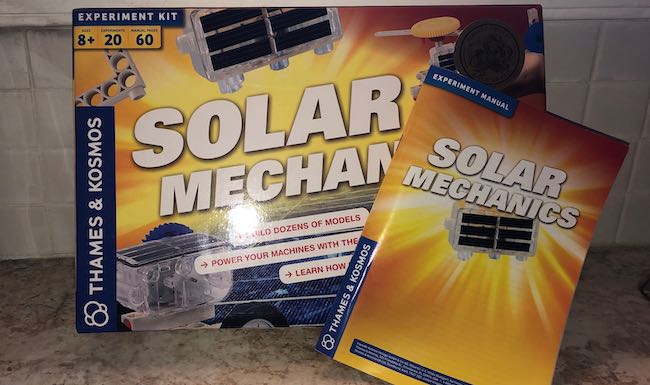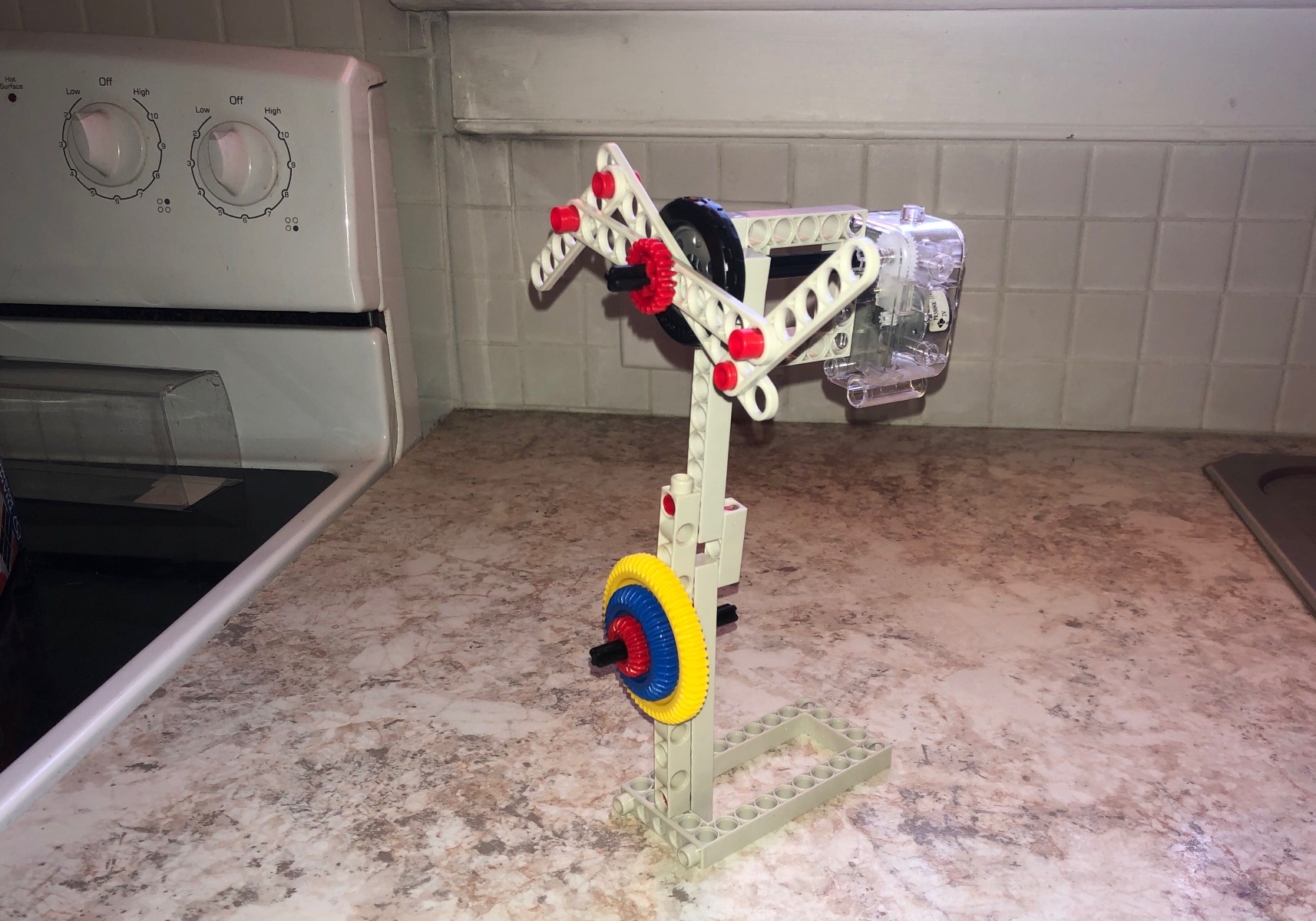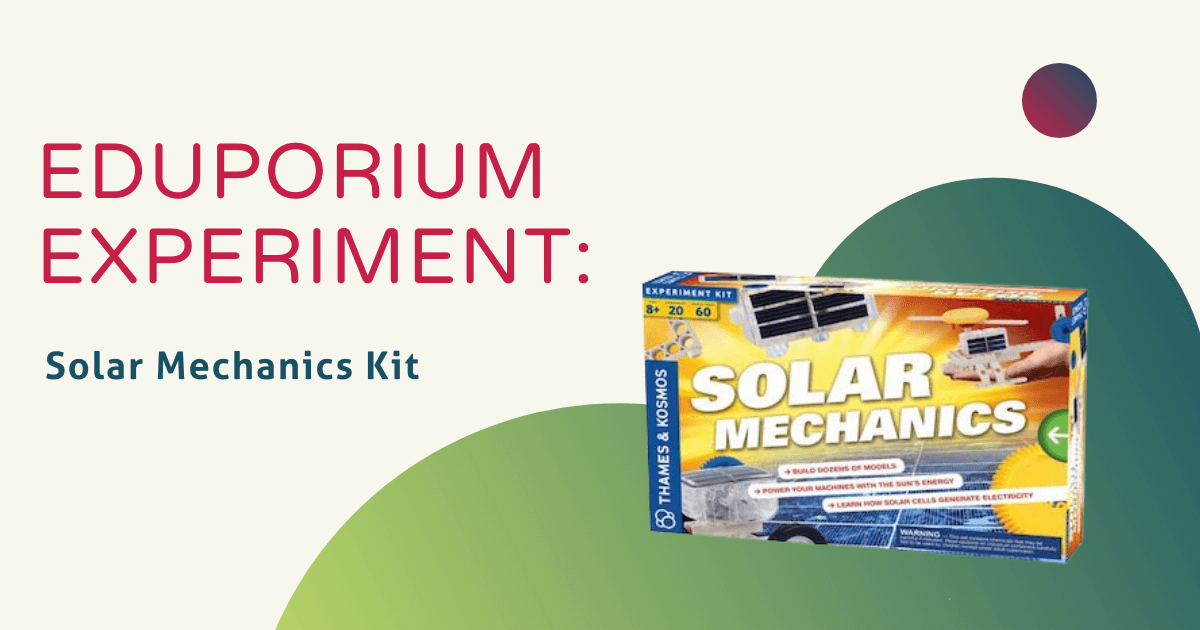Creative problem solving and using innovative materials are two very important parts of engineering and designing in the 21st century. Of course, it is imperative that educators practice what they preach and teach kids the importance of both conservation and alternative energy sources since there is a good chance their future careers could have to do with one or both of those. One of our most valuable alternative energy sources is the solar energy that comes from the Sun. With solar devices, we have the ability to harness the Sun’s massive amounts of energy and transform it into fuel for other devices—like some of the small-scale models students can build with the Solar Mechanics Kit from Thames & Kosmos!
The Solar Mechanics Kit is all about hands-on exploration and engineering. There are over 60 pieces in the box, but the most important one is the solar motor unit. This is the heart of every model as its single volt helps provide energy for making their models function. All pieces snap together securely and the projects are incorporate easy construction opportunities for students as young as eight.
Creating solar-powered projects.
Like every Thames & Kosmos kit, the Solar Mechanics Kit includes a full color manual that's detailed and easy to follow. A lot of the first part of the manual is filled with valuable lessons and information about solar energy so that students are able to gain a bunch of background knowledge before they begin assembling. It starts with sample project guides to get them comfortable with working with the pieces in the kit and even introduces them to concepts like how gears work and the roles they play in machines. As students progress through the projects, they’ll encounter models that use gears and solar energy to operate. And, this, of course, is a great introduction to clean energy and the science behind it.

The manual also provides sample projects and experiments students can conduct, including building a test car for a time trial. Once they’ve got some experience with the engineering of the models, the manual also provides plenty of pertinent background information on light sources, solar cells, speed, and more. Since the heart of the kit is the solar motor unit, this is valuable information for students to know! I’d recommend taking some time to read over the background information since it’s interesting and helpful for students.
How to build a solar-powered fan.
Since I’ve never really worked with something like this in the past, I decided to pretty much jump into the deep end and build one of the more complex solar projects in the kit, the Solar Fan. It’s a great for showing kids how alternative energy sources can power machines, like windmills, and it's easy to assemble. The fan involves almost all the components in the kit—gears, wheels, axles and, of course, the solar motor. It took me about 25 minutes to fully assemble the fan, but the instructions were spot on. It just took a bit of time since I chose a slightly more complex project to take on.

Once I model built the model, there was one more step before it worked to its full potential. I had to place it outside in direct sunlight. Once I got out there, the energy from the Sun activated the solar motor and the fan’s blades started spinning! It became pretty apparent to me that this is a great, scaled-down way of showing kids how solar energy can replace electricity and give devices the power they need to operate. It was bright when I went out, so consider this if using the kit around sunset or in cloudy conditions. If you’re looking for an effective and very hands-on way of introducing STEM students to solar energy, though (with plenty of engineering as well), the Solar Mechanics Kit is a great place to start!
Where to find the Solar Mechanics Kit.
To order a Solar Mechanics Kit from the Eduporium store, click below! Check out some of the other EdTech items on our store that work with solar energy as well. And, look out next week as our Tips & Tricks series returns with a look at Cubelets. In the meantime, don’t forget to follow us on Twitter and Instagram and like us on Facebook!



